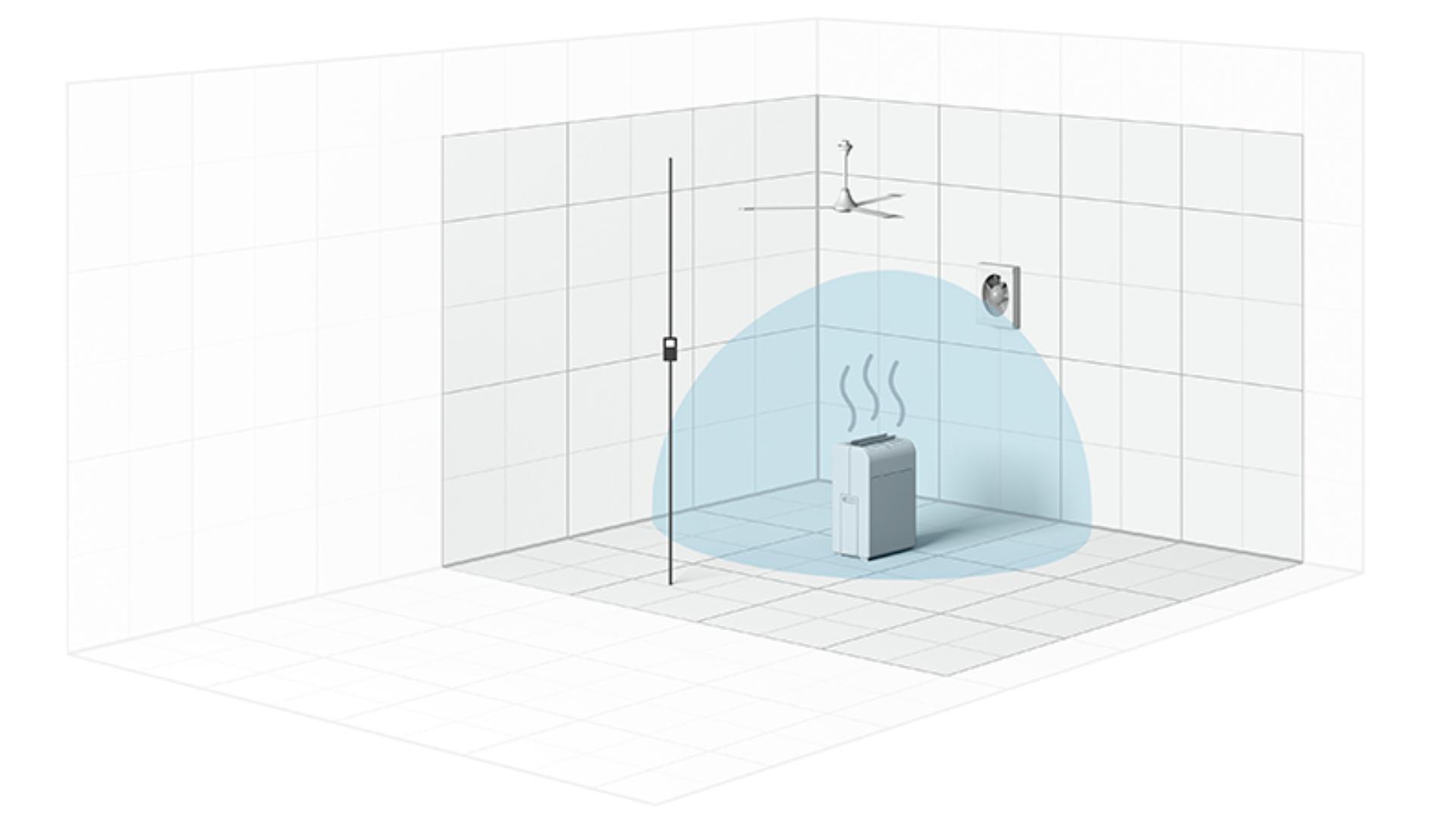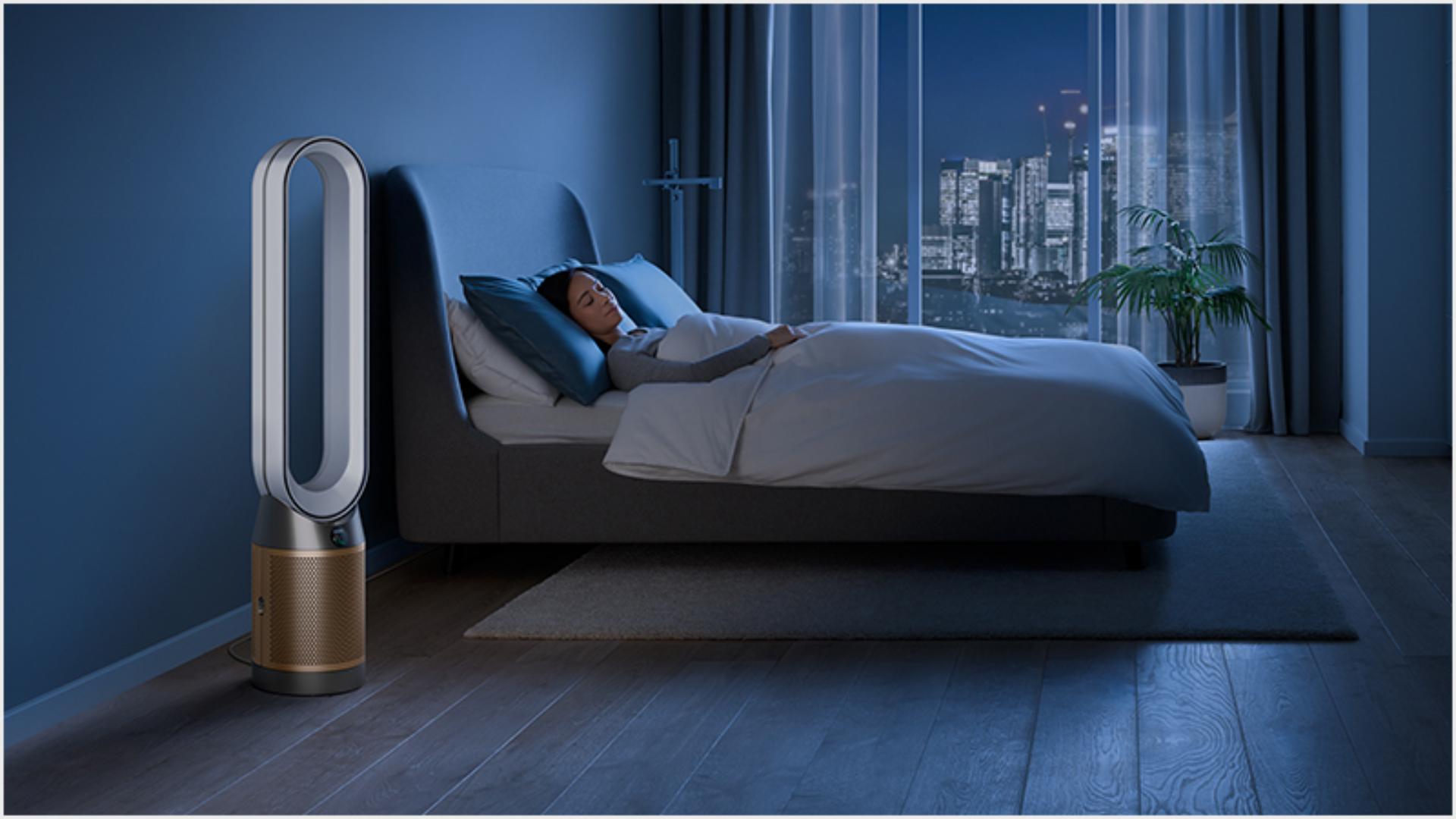
What is CADR? And other air purifier testing questions
Purifiers come in many shapes and sizes, from whole-room and personal to portable purifiers. Even within these categories there is significant variation – in price, in performance, in appearance. So how can you choose the best purifier for your home?
4 May 2022
I’ve seen the term CADR on lots of different purifiers. What is CADR?
CADR stands for Clean Air Delivery Rate and it is the metric generated by old test methods dating back to the 1980s.
The CADR metric is a measurement of the clean air volume that a purifier can provide in a fixed amount of time – ultimately a measurement of speed. It measures the amount of filtered air passed through a purifier – but we believe it shouldn’t be a standalone metric to assess the full performance of modern day intelligent purifier.
How does the test work?
The different test standards across the world for generating a CADR metric follow similar stipulations in how the test runs, and the chamber in which it should take place.
The test chamber is small, between 28m3 and 30m3, depending on the methodology. It is a climate-controlled chamber, with solid walls, floor and ceiling. In the centre sits the purifier in question, and particle pollution is injected into the room from the outside through an aperture. A single sensor is installed in one side of the room to monitor the particle count in the room. There are also two fans – one wall-mounted and one ceiling fan – to aid air circulation. At Dyson, we don’t believe this is a representative space for measuring the performance of a purifier in modern homes.
Before the test begins, the purifier is placed in the centre of the room, manually switched on in maximum mode and ceiling and wall fans switched on. A controlled amount of pollutant is pumped into the room, the fans mixing and homogenising the pollutant concentration. At the start of the test, the ceiling fan is turned off, but the circulating fan remains running for the full test. It is conducted with dust, pollen and tobacco smoke, and runs for 20 minutes each time.
How is CADR calculated?
-

-
There are two measured factors that influence the CADR rating of the product tested:
- the filter efficiency
- the air flow through the filters
The CADR score is calculated by measuring how much faster a purifier removes particles from the air compared to how quickly they would naturally drop and settle on surfaces. This is then multiplied by the volume of the test chamber – meaning that the chamber size is inextricably linked to the overall score. If the chamber is small and unrepresentative of real homes, the score may not be representative of real-world use.
What does Dyson think about purifier testing?
Current test standards do not represent real living conditions.
The small chamber size is unrepresentative of a real-world environment – at around 30m3, it is small compared to the average room size in real homes, and homes rarely feature in-built circulatory or ceiling fans. This means a machine with a high CADR may actually struggle to clean the air properly when placed in a bigger room without a ceiling fan. In some cases they merely create a bubble of clean air in one corner of the room, and struggle to create whole room clean air in real living environments.
The CADR analysis method can be misleading to consumers, particularly given that CADR ratings are not generated in auto mode, and that they are inherently linked to the test chamber size.
At Dyson we believe that a purifier should clean the whole room. To do that it must be multifunctional – effectively sensing deteriorating air quality, capturing pollutants properly and projecting clean air to every corner of the room. As such, we champion testing that evaluates all three aspects of purification performance rather than focusing solely on filtration speed. Current testing methodologies that generate CADR ratings do not consider intelligent sensing nor full-room projection – two critical functions of high-performance purifiers.
We also believe that when choosing a machine, people should have the data at their fingertips to understand the performance of any machine in the real-world. So our engineers have spent years developing a new testing methodology, Point Loading Auto Response (POLAR), that takes into account multifunctionality and real-world performance.
What is the POLAR test?
Dyson’s POLAR test method represents real living spaces.
The test method assesses the ability of machines to remove harmful particles and gases, the uniformity of the cleaning performance delivered around the whole room, and airflow projection. Crucially, all machines are tested using their automatic pollution detection function, and the test ends when the purifier deems the room “clean” and switches itself of. The purifier’s interpretation of “clean” can then be assessed both in terms of particle reduction and evenness throughout the room.
The POLAR test chamber is much bigger than a CADR chamber, and more representative of real-world environments than existing standards dictate with a 81m3 footprint and no external fan to support air circulation – the purifier itself must do this. It is positioned in the corner of the room, rather than the centre, reflecting a more likely position in the home. Around the chamber there are nine sensors – two per corner at different heights and one in the centre – to assess the evenness of purification throughout the room.
When the test begins, a set amount of pollutant is injected into one corner of the chamber. Placed diagonally opposite the pollution event, the purifier must detect the deteriorating air quality and react accordingly. To score highly, the purifier being tested must first detect and react to the deteriorating air quality, secondly effectively clean the air evenly throughout the room, and thirdly switch itself off once the purifier deems the room clean. Both the particle reduction and evenness of purification are measured.
Discover Dyson purifiers
Advanced air purifying and cooling.

Press Contact
ANZ Press Office
Email: aupressoffice@dyson.com
Dyson Newsroom
 Call us
Call us Email us
Email us Request a meeting
Request a meeting Live chat
Live chat